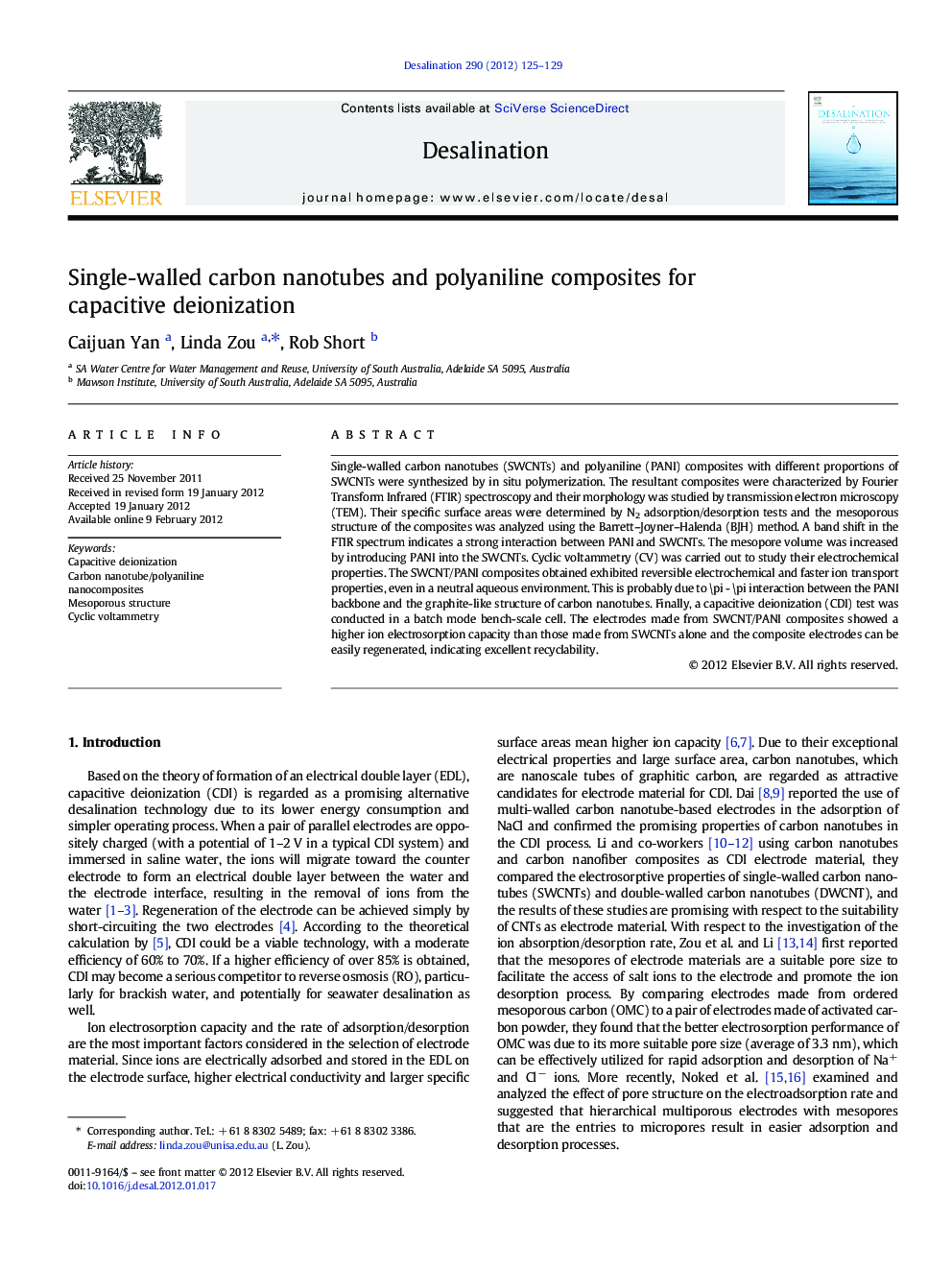| Article ID | Journal | Published Year | Pages | File Type |
|---|---|---|---|---|
| 624311 | Desalination | 2012 | 5 Pages |
Single-walled carbon nanotubes (SWCNTs) and polyaniline (PANI) composites with different proportions of SWCNTs were synthesized by in situ polymerization. The resultant composites were characterized by Fourier Transform Infrared (FTIR) spectroscopy and their morphology was studied by transmission electron microscopy (TEM). Their specific surface areas were determined by N2 adsorption/desorption tests and the mesoporous structure of the composites was analyzed using the Barrett–Joyner–Halenda (BJH) method. A band shift in the FTIR spectrum indicates a strong interaction between PANI and SWCNTs. The mesopore volume was increased by introducing PANI into the SWCNTs. Cyclic voltammetry (CV) was carried out to study their electrochemical properties. The SWCNT/PANI composites obtained exhibited reversible electrochemical and faster ion transport properties, even in a neutral aqueous environment. This is probably due to \pi - \pi interaction between the PANI backbone and the graphite-like structure of carbon nanotubes. Finally, a capacitive deionization (CDI) test was conducted in a batch mode bench-scale cell. The electrodes made from SWCNT/PANI composites showed a higher ion electrosorption capacity than those made from SWCNTs alone and the composite electrodes can be easily regenerated, indicating excellent recyclability.
► Use polyaniline to modify the pore structure of single-walled carbon nanotubes. ► Better mesopore distribution and increased mesopore volume were obtained. ► Higher ion removal efficiency was achieved. ► Fast and efficient regeneration of electrodes was observed.
